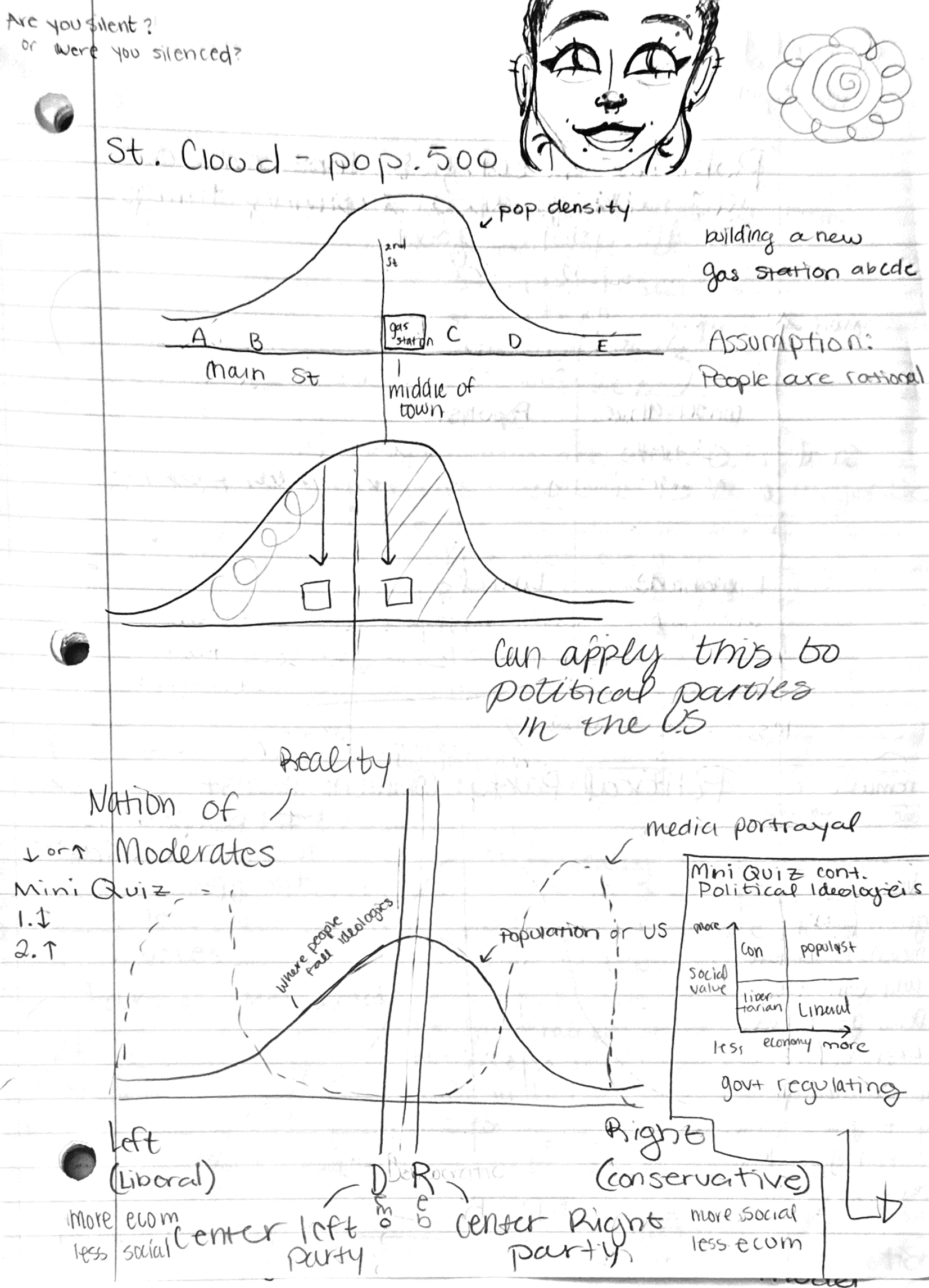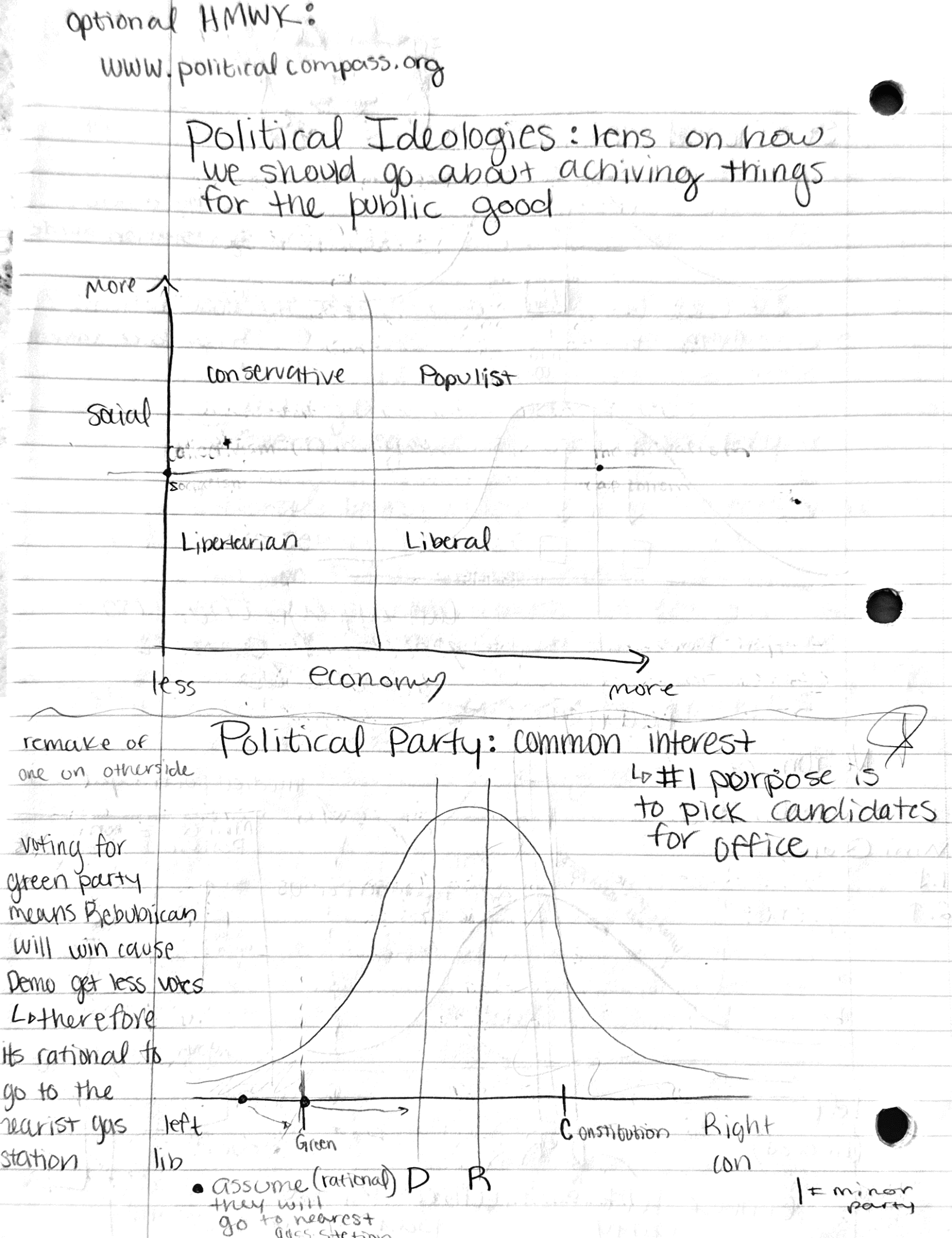Two Party system and Primaries


Political Party → common interest, #1 purpose is to pick candidates for office
“voting for green party means republican will win because democrats will get less votes, therefore if one is in the green party, the most rational thing to do is vote for democrats” (going to the nearest gas station)
US is considered a 2 party system
single member district representation
435 congressional districts
District 1 = r- 50%, d=30%, g=205 → r wins
District 2 = r- 30%, d- 50%, g- 20% → d wins
with this, it narrows down to a majority of two parties
It is really hard to win seats in a 2 party system because of single member district representation
Not fixed at 50/50, can shift depending on populations opinion, for example George Bush after 9/11, the bar shifted to lean more right
Primaries
Party election people vote who they want to represent in there party
Closed
must be registered with the party you want to vote for in primary
Open
do not have to be registered to specific party to vote for them
Top 2
everyone is on one ballot and you choose one person, top two winners go to general election (could be two democrats or two republicans or one republican and one democrat)
voting for an individual instead of parties
Political polarization → less people voting in primaries
tend to have more conservative republicans and more liberal democrats
primaries look to the base
general looks to center
media portrays US to be super left and super right but in reality a majority of people are towards the center (moderate)
Capitalism → free market economy controlled by private parties, individuals, etc.
Libertarian → concerned about level of govt involvement, extreme end = zero govt control over social issues (generally, but American libertarian is more left leaning)
Democrat party is a center left party
Republican party is a center right party